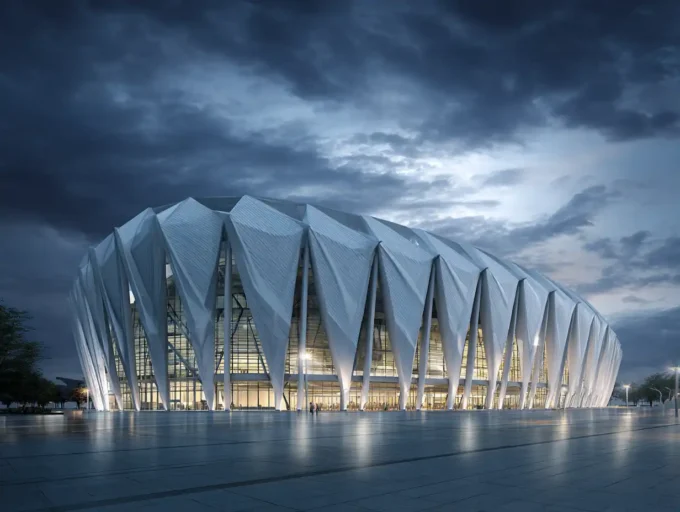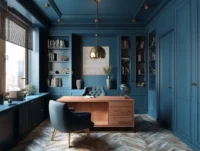When it comes to designing a building, the roof is more than just a protective structure—it’s a statement piece that blends functionality with aesthetics. Architectural roofing systems play a crucial role in defining a building’s character while ensuring durability and efficiency. Whether we’re talking about residential homes or commercial spaces, the right roofing system can elevate the entire design.
Understanding these systems helps us make informed decisions about materials, styles, and structural needs. From sleek modern designs to classic pitched roofs, each option comes with its own set of benefits. By diving into the details, we can uncover how these systems not only enhance visual appeal but also contribute to energy efficiency and long-term performance.
What Are Architectural Roofing Systems?
Architectural roofing systems combine functionality and design to meet structural and aesthetic requirements in construction. These systems differ from standard roofing by emphasizing visual appeal while maintaining durability, energy efficiency, and weather resistance.
They use materials like metal, clay tiles, asphalt shingles, and slate, each offering distinct features. For instance, metal roofs provide modern aesthetics with high energy efficiency, while clay tiles suit Mediterranean designs with exceptional durability.
These systems often integrate features such as advanced ventilation, insulation layers, or reflective coatings. Such enhancements improve indoor climate control and reduce utility costs in various climates.
Architectural roofing is central to enhancing a building’s identity. By aligning with architectural intent, these systems create roofs that both protect and elevate structural design.

Types Of Architectural Roofing Systems
Architectural roofing systems offer a variety of designs and materials to meet both functional and aesthetic needs. Below, we explore key types of roofing systems commonly used in modern and traditional construction.
Shingle Roofing
Shingle roofing combines versatility and cost-effectiveness. Common options include asphalt, wood, and architectural shingles, each serving distinct functions. Asphalt shingles provide a wide range of colors and durability, lasting up to 30 years with proper maintenance. Architectural shingles feature enhanced layering for better design and water resistance. For a rustic look, wood shingles deliver timeless appeal but require regular upkeep to prevent rot.
Metal Roofing
Metal roofing delivers modern design and exceptional durability. Aluminum, steel, and copper are widely used, with lifespans ranging from 40 to 70 years depending on material quality. This option resists extreme weather, including high winds and hail, while offering excellent energy efficiency through reflective coatings. Standing seam panels and corrugated metal sheets are popular styles ideal for both residential and commercial properties.
Tile Roofing
Tile roofing balances durability with distinctive aesthetics. Clay, concrete, and slate tiles are durable choices that withstand fire, insects, and harsh weather. Clay tiles fit Mediterranean or Spanish architecture, while concrete tiles mimic various aesthetics at a lower cost. Slate tiles, among the most durable, last over 75 years and offer natural, earthy tones for upscale areas. These materials also support energy efficiency through natural thermal regulation.
Flat Roofing
Flat roofing supports contemporary designs and functional use of rooftop space. Common materials include modified bitumen, EPDM rubber, and TPO membranes, which resist UV rays and water pooling. Flat systems are popular for commercial buildings, often used for gardens, HVAC units, or solar panel installation. Ensuring proper drainage and waterproofing is critical to maximize longevity, which typically ranges from 10 to 30 years based on material quality.

Key Components Of Roofing Systems
Understanding the key components of roofing systems helps ensure performance, durability, and proper installation. These elements work together to provide structural support, protection, and climate control.
Roof Decking
Roof decking forms the foundation of the roofing system, providing structural support to other materials. It typically consists of plywood or oriented strand board (OSB), chosen for their strength and affordability. Decking distributes loads evenly across the roof structure and acts as a stable base for shingles, metal, or tiles. Proper decking installation is critical since insufficient support can result in leaks or reduced lifespan of the roof system.
Underlayment
Underlayment is a protective layer installed between the decking and the outer roofing material. It guards against water infiltration, safeguarding the structure during severe weather. Common types include felt (asphalt-saturated paper) and synthetic underlayments, with synthetic options offering higher durability and moisture resistance. This barrier also adds an extra layer of fire protection and contributes to enhancing overall roof longevity.
Roof Ventilation
Roof ventilation maintains airflow within the attic or roof cavity, preventing moisture buildup and heat damage. Key ventilation components include ridge vents, soffit vents, and gable vents. Proper ventilation regulates temperature, mitigating issues like ice dams in colder regions and reducing cooling costs in warmer areas. An adequately ventilated roof ensures longer-lasting materials and improves indoor air quality by preventing mold growth.

Benefits Of Architectural Roofing Systems
Architectural roofing systems offer a range of advantages that combine functionality, design, and cost-effectiveness. These systems not only protect structures but also enhance their overall appeal and performance.
Durability And Longevity
Architectural roofing systems are engineered for exceptional durability. Materials like metal, clay tiles, and slate withstand extreme weather conditions, including heavy rains, strong winds, and UV exposure. For instance, slate roofs can last over 75 years with minimal maintenance, while metal roofs often exceed 40 years. These long lifespans reduce repair and replacement costs, promoting sustainable building practices.
Aesthetic Appeal
These roofing systems elevate a building’s visual identity. With diverse options such as the rustic charm of wooden shingles, the bold modernity of standing seam metal roofs, and the timeless elegance of clay tiles, we can achieve specific architectural styles. Color, texture, and design flexibility allow seamless integration with a building’s facade, enhancing curb appeal and market value.
Energy Efficiency
Architectural roofing systems effectively regulate indoor temperatures. Features like reflective coatings, thermal insulation layers, and proper ventilation minimize heat transfer. Metal roofs with reflective finishes reduce cooling costs by up to 25%, while materials like clay and concrete provide natural insulation. Energy-efficient roofs contribute to lower utility bills and reduced environmental impact.

Choosing The Right Roofing System
Selecting the right roofing system is crucial for balancing aesthetics, functionality, and long-term performance. Various factors, including climate, budget, and architectural style, determine the most suitable option.
Climate Considerations
Environmental factors heavily influence roofing system choice. Regions with heavy snowfall benefit from steep-sloped roofs like metal or asphalt shingles, preventing snow accumulation. Conversely, flat or low-sloped roofs with durable materials, such as EPDM or TPO membranes, suit areas with minimal precipitation. Hot climates demand reflective materials like cool-coated metal or light-colored tiles to reduce heat absorption. For coastal areas, salt-resistant options, such as aluminum or clay tiles, are ideal to mitigate damage from sea air.
Budget And Maintenance
Cost constraints and upkeep frequency dictate roofing decisions. Asphalt shingles offer affordability and low maintenance, making them suitable for budget-conscious projects. Although metal and slate roofs have higher upfront costs, their longevity and minimal repairs offset expenses over time. Tile roofs, while durable, may require periodic inspection for cracked or loose pieces, adding to maintenance efforts. Evaluating material lifespan and associated upkeep ensures long-term cost-effectiveness.
Architectural Style
Roofing systems reinforce a building’s design identity. Traditional homes align well with classic options like wood shingles or clay tiles to complement historical aesthetics. Contemporary structures benefit from sleek metal roofing or flat systems for a streamlined appearance. Mediterranean or Spanish-style buildings achieve authenticity with terracotta or slate tiles. Matching a roof’s material and design to the broader architectural style enhances cohesion and visual appeal.
Conclusion
Architectural roofing systems serve as a crucial element in building design, seamlessly integrating functionality and aesthetics. These systems enhance structural durability while contributing to a building’s character and energy efficiency. Materials like metal, clay tiles, and slate offer distinct advantages, ranging from longevity and weather resistance to timeless visual appeal.
Choosing an appropriate roofing system involves balancing factors such as climate, budget, and architectural intent. Materials and designs must align with environmental conditions to maximize performance, while cost considerations should reflect both upfront investments and long-term savings. By prioritizing these elements, we ensure roofing systems not only protect buildings but also elevate their design identity.
- architectural building roofs
- architectural design roofs
- creative roof solutions
- durable modern roofs
- futuristic roof designs
- high-performance roofing
- innovative architectural solutions
- modular roofing systems
- new roofing innovations
- revolutionary roofing technology
- roof solutions for architects
- roofing systems for commercial buildings
- sleek architectural roofs
- urban architecture roofing














Leave a comment